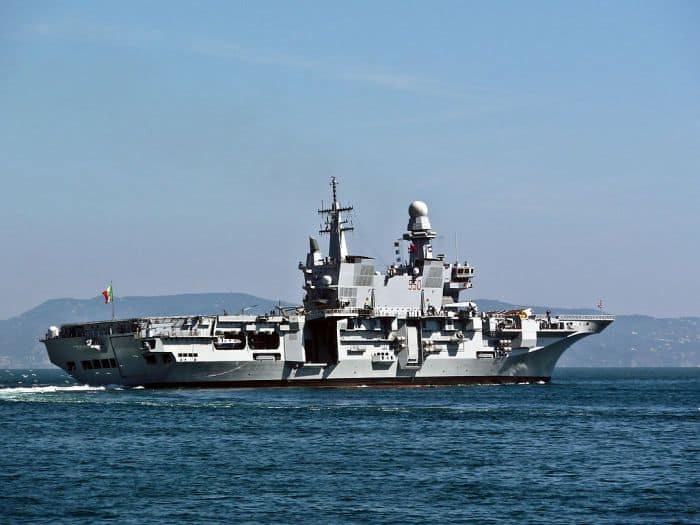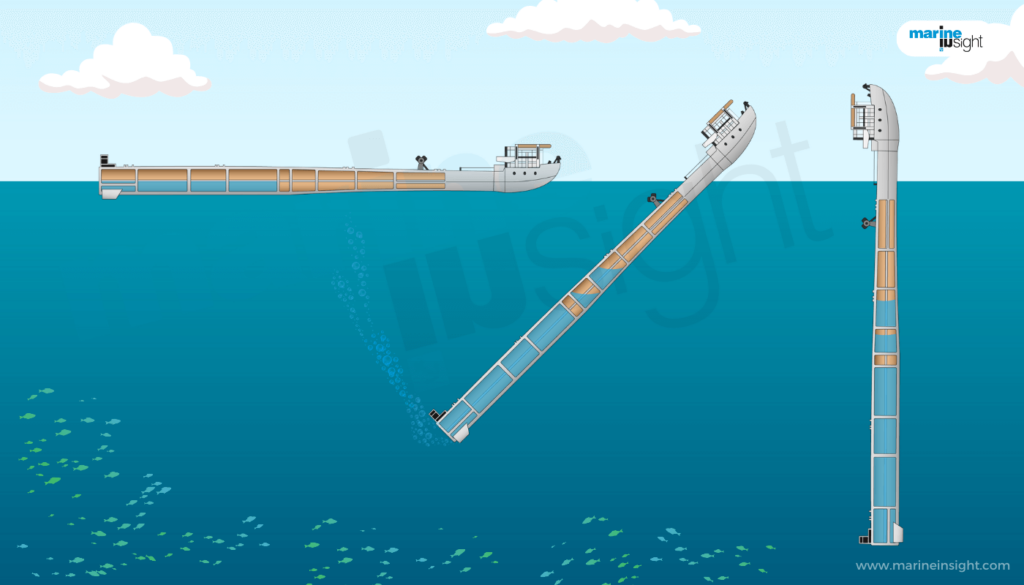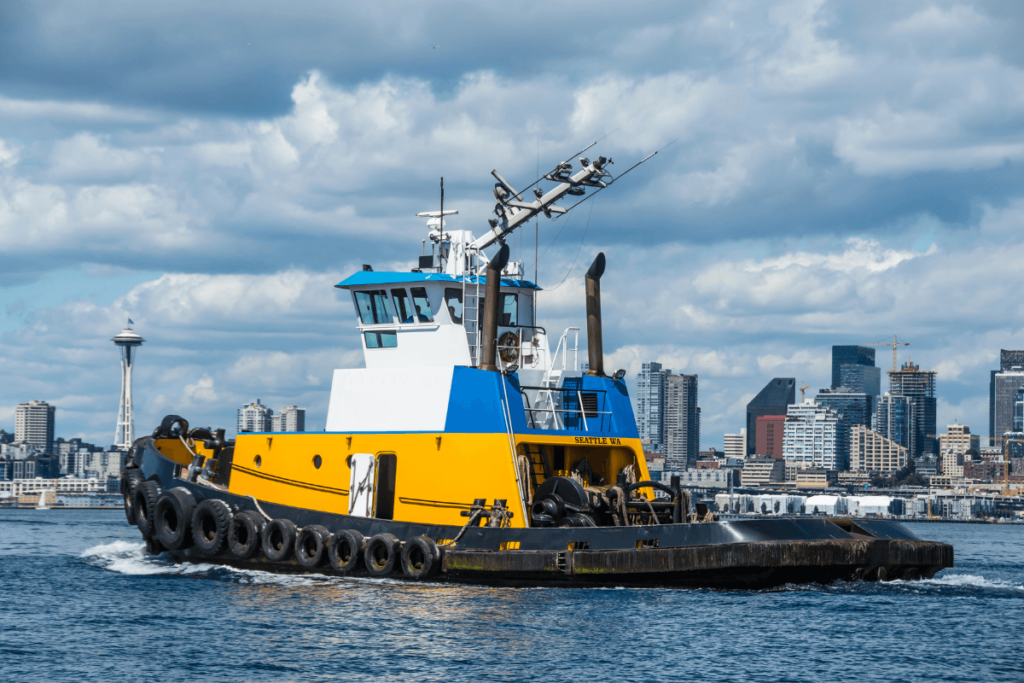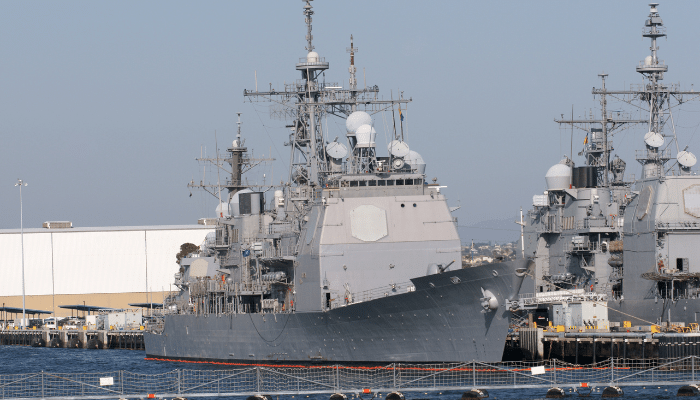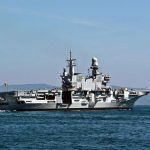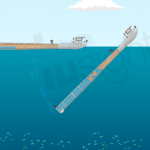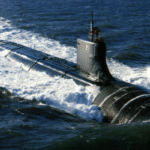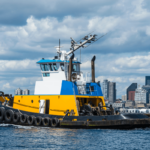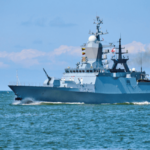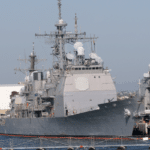Top 10 Biggest LPG Carriers in The World
LPG or Liquefied Petroleum Gas is a multipurpose fuel with innumerable applications in the industrial sector, manufacturing, transportation, power generation etc. The demand for LPG has rapidly increased as the world has shifted to the utilisation of cleaner fuels, due to increasing global warming.
This enhanced demand has generated opportunities for the creation of maritime LPG transportation services that are offered by either LPG traders and distributors or by shipping companies owing LPG Carriers.
The main trade route of the LPG shipping industry is from Arabian Gulf to Asia. In recent times, the US has emerged as a major export centre, hence the route from the US to Asia has also become vital.
LPG is carried in carriers of numerous sizes but the Very Large Gas Carriers or VLGCs are the biggest category of vessels in the global LPG fleet. They have an LPG carrying capacity of more than 70,000 cubic m and are specifically designed to be energy-efficient, and meet international environmental norms regarding carbon emissions.
The highly portable nature of LPG makes its maritime transportation a lucrative economic activity with much scope of profit. In this article, let us explore the magnificent features of the world’s biggest LPG Carriers.
1. Bellavista Explorer
The world’s largest LPG Carrier Bellavista Explorer was launched in 2021 by Hyundai Samho Heavy Industries, a company owned by South Korea’s Hyundai Shipbuilding Group. It incorporates a fuel tank that allows the carrier to sail up to 31,700 kilometres and has a storage capacity of 90,000 cubic m.
Equipped with an efficient dual-fuel propulsion technology that can utilise both LPG and diesel, it is an environment-friendly LPG-Carrier that produces 80% fewer sulphur emissions, 50% lower nitrogen emissions and reduces greenhouse gas emissions by 25%.
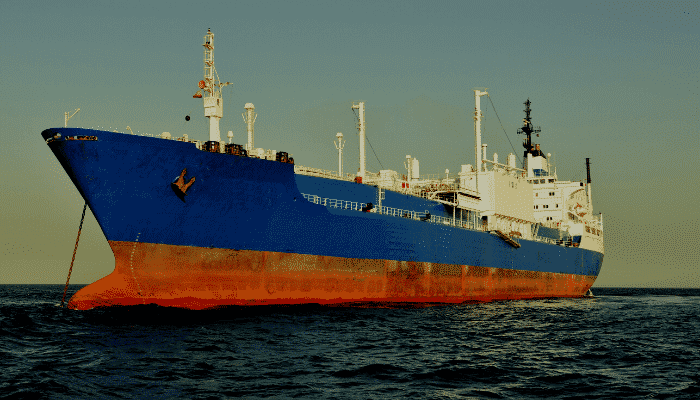
It is sailing under the flagship of Singapore and has a double-bottomed hull which reduces the probability of oil outflows in case of an accident or grounding.
The vessel measures 229.98 m lengthwise and 36.6 m breadthwise and its height is 23.6 m approximately. Its gross tonnage is 52868 tonnes and its deadweight is 58045.
The ship can accommodate 171671 cubic m of Liquid Gas. The draught of this LPG Carrier is recorded to be 12 m and can attain a maximum speed of 18 knots with an average speed of about 14.6 knots.
2. Flanders Innovation
The Flanders Innovation is one of the biggest LPG dual-fuel carriers in the world. It was built in 2021 in the Jiangnan Shipyard, China. It is owned by Shimanami Shipping SA and operated by Exmar Shipmanagement NV.
It has a carrying capacity of 88,000 cubic m and is powered by LPG fuel. It is said that the Carrier would cut-down operational emissions by 38% compared to International Maritime Organization’s reference lines for the Very Large Gas Carriers.
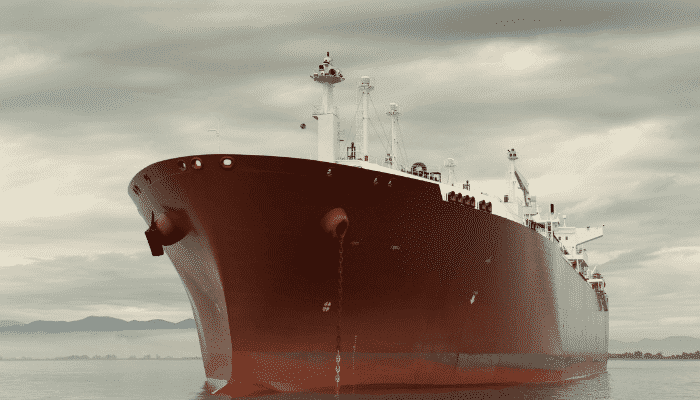
It is registered at Antwerp port and is currently sailing under the Belgian flag. It has a double hull and its deadweight is 54,998 MT. Its average draught is estimated to be 10 m. Its length is 230 m and it is 36 m broad. Its average speed is 11.6 knots while it can attain a maximum speed of 19 knots.
3. Gas Venus
Gas Venus, earlier known as Buena Venus, was built in 2006 by Kanrei Shipbuilding Corporation. It is owned and managed by PT. Mammiri Line, a shipping enterprise based in Makassar, Indonesia. Its IMO number is 9375460 and its MMSI number is 525900722. It is registered at Makassar port and presently sailing under the Indonesian flagship. Its call sign is YDAN2.
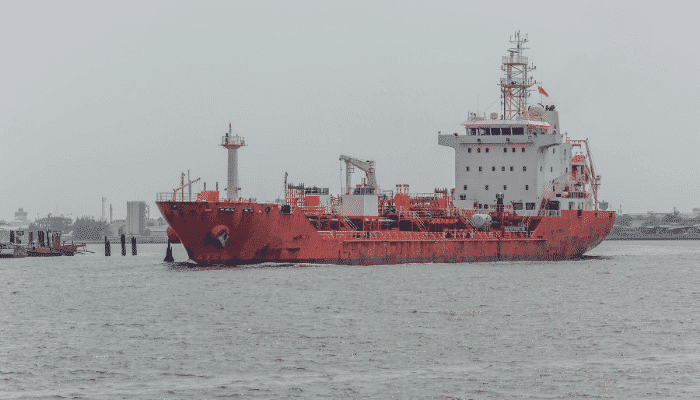
It has a unique design that comprises an axle-hung shaft generator. It has a low carbon footprint since it is fuelled by LPG. The ship measures 96 m lengthwise, 16 m breadthwise and has a draught of 5.5 m. Its gross tonnage is 2997 m and its deadweight is 3170 tonnes. It can attain a maximum speed of 18 knots. It has a diesel engine with an electric motor and 2 Stroke Single Acting, 6 Cylinders with a power of 2,400 KW, built by Makita Corporation. It has a vertical boiler and 3 generators.
4. BW LPG Ship – BW Lord
World’s leading company, in terms of ownership and operation of VLGC ships, BW LPG Ship fleet comprises multiple ships with a carrying capacity of more than 84,000 cubic m. It owns the world’s biggest fleet of LPG driven VLGCs and 15 of its ships have an LPG dual-fuel propulsion system that promises the lowest carbon emissions.
The biggest ship of the fleet, in terms of its carrying capacity, is BW Lord owned by BW Global United LPG India Private Limited. It was built in 2008 by Daewoo Shipbuilding and Marine Engineering Corporation, Okpo, South Korea. It is registered at Kochi port and is currently under the flagship of India.
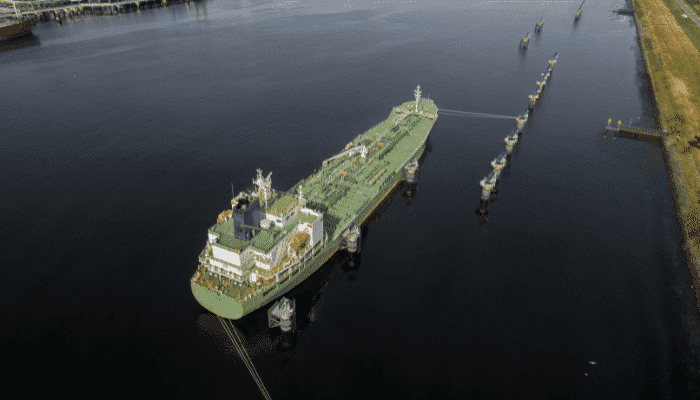
BW Lord has a length of 226 m while its beam measures 36.50 m. The distance from its bow to bridge is about 189 m. Its gross tonnage is 48502 tonnes and its deadweight is 54691 tonnes. It has an average draught of 10.1 m. Its average and maximum sailing speed are 11.2 knots and 19 knots respectively.
It has a 14,280 Kilowatt DOOSAN-MAN B&W main engine, 3 auxiliary engines and a single fixed propeller.
5. Dorian COMET ships – 19 ships 0f 84,000 cu- m
Dorian LPG is a shipping company owning and operating Very Large Gas Carriers. It owns a fleet of 21 VLGCs, out of which 19 ships have a carrying capacity of 84,000 cubic m. All these ships are sailing under the flag of the Bahamas. These ships are fuel-efficient and are designed to be sustainable for the environment. Their average life expectancy is estimated to be 7 years.
Some of the ships from this fleet include- The Caravelle, The Challenger, Copernicus, VLGC Cobra, Continental, Clermont etc.
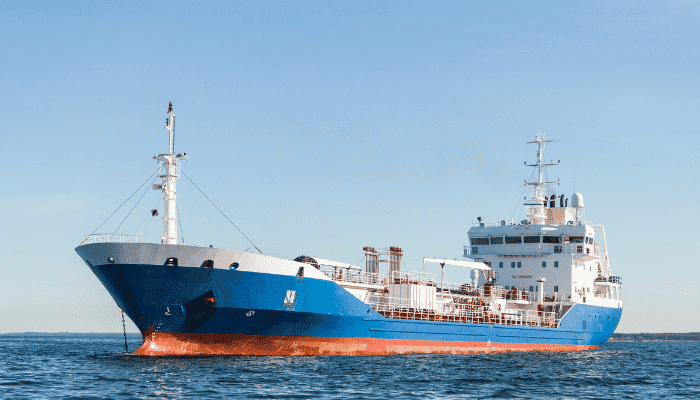
The ECO VLGC Caravelle, earlier known as Caravelle T 4, was built in 2016 by Hyundai Samho Heavy Industries Corporation, Samho, South Korea. It measures 225 m lengthwise and 36 m breadthwise. Its average draught is 10 m while its average and maximum speeds are 11.5 knots and 18.8 knots. Its gross tonnage is 47379 tonnes while its deadweight is 54566 tonnes. The carrier is powered by a 6G60ME-C MAN-B&W engine with a power of 12400 kW.
6. Pacific gas VLGC fleet – 8 ships with 84,000 cubic m capacity
Pacific Gas is a Gas shipping company registered in Hong Kong. The enterprise owns and operates around 10 ocean-going VLGC ships, out of which 8 are the biggest among the fleet with a carrying capacity of 84,000 cubic m.
The 8 VLGCs are Pacific Shanghai, Hong Kong, Binzhou, Dongying, Yantai, Qingdao, Rizhao and Pacific Weihai. All these LPG ships are currently sailing under the flag of Hong Kong.
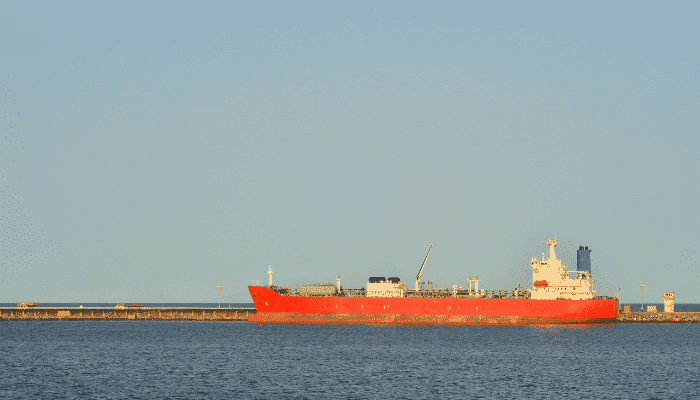
Pacific Shanghai was built in 2017. Her call sign is VRPV4 and it is registered at Hong Kong port. It is 226 m long and 37 m broad with an average draught of 10 m. The ship’s average and maximum speeds are recorded to be 12 knots and 18.5 knots. Its Gross Tonnage is 48419 tonnes and its deadweight is about 54747 tonnes.
Another huge LPG Carrier is Pacific Hong Kong with IMO and MMSI numbers of 9778478 and 477035900. It was built in 2017 and measures 226 m lengthwise and 36 m breadthwise. Its gross tonnage is 48419 tonnes while its summer deadweight is 54747 tonnes. It has a MAN-B&W engine with a power of 12420 kW.
7. Solvangship VLGCs- Clipper Posh and Clipper Quito
Solvang ASA is a shipping company engaged in the transportation of LPG and petrochemical gases. Headquartered in Stavanger, Norway, it has a fleet of Ethylene carriers, Large Gas Carriers and the VLGCs. Among the 8 VLGCs, two vessels namely Clipper Posh and Clipper Quito have an LPG carrying capacity of 84,000 cubic m.
Clipper Posh was built in 2013 and is owned by Clipper Shipping AS and operated by Solvang ASA. It is currently sailing under the flag of Norway. Its LOA is 225 m and its breadth is 36.6 m. It has a summer deadweight of 55,047 tonnes while its gross tonnage is 48,051 tonnes. It has a maximum draught of 12.1 m and its average sailing speed is 12 knots while its maximum attainable speed is 20 knots. Its main engine operates at a power of 12,600 kW.
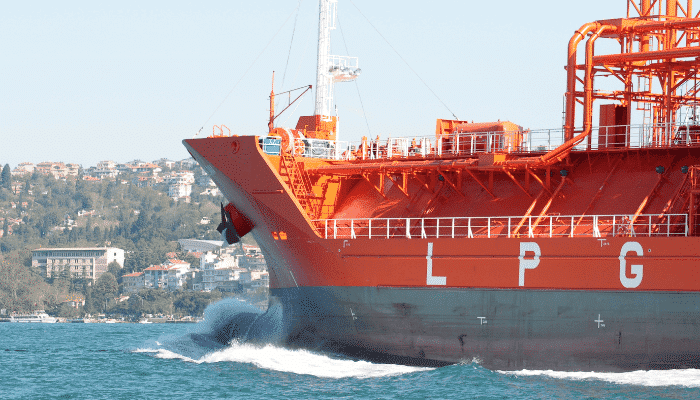
Another huge LPG vessel operated by Solvang ASA is Clipper Quito, built-in 2013. The vessel is registered at the Stavanger port and is currently sailing under the Norwegian flag. The vessel measures 225 m lengthwise and 37 m breadthwise. It has an average draught of 10 m and an average speed of 11.5 knots. Its maximum speed is around 20 knots.
8. KOTC LPG ship fleet – 3 ships of 82516 m3
Kuwait Oil Tanker Company, a subsidiary of Kuwait Petroleum Corporation involved in the maritime transportation of Crude oil, petroleum products and LPG. It possesses 5 LPG carriers out of which 3 namely, Gas Umm Al Rowaisat, Gas AL Ahmadiah and Gas Al Mubarakiah have a carrying capacity of 82516m3. All these ships are sailing under the flag Of Kuwait.
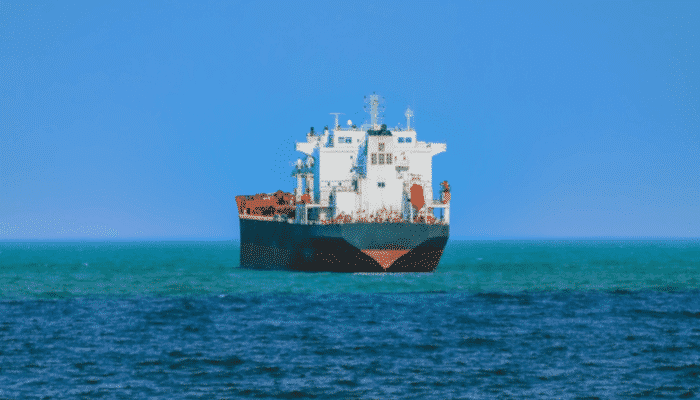
Gas Umm Al Rowaisat was built in 2020 and her length and width are 228.45 m and 36 m. Its draught is 11.2 m, meanwhile, its gross tonnage and deadweight are reported to be 49394 and 54551 tonnes. The other two ships have the same dimensions as well.
9. Nakilat LPG- Al Wukir
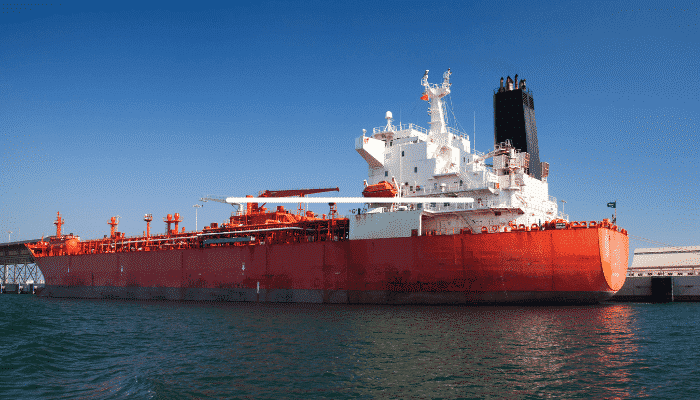
Nakilat is a shipping and maritime-based company based in Qatar. It owns 4 VLGCs out of which Al Wukir is the biggest LPG carrier with a carrying capacity of 82491 m3. It was built in 2008 by Hyundai Heavy Industries and is currently sailing under the flag of the Marshall Islands. Its length is 225.28 m and its breadth is 36.63 m. Its Gross Tonnage is 47058 tonnes and its deadweight is around 54446 tonnes.
10. Petredec’s Manifesto
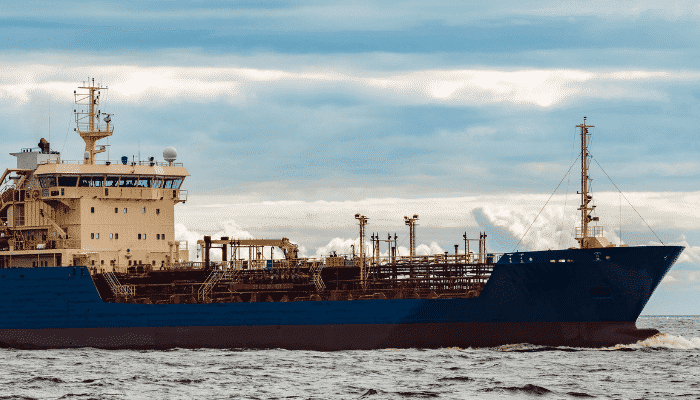
Petredec Shipping company owns multiple LPG carriers out of which Manifesto is the biggest in terms of its carrying capacity. The vessel was built in 2013 by Hyundai Heavy Industries, South Korea and is currently sailing under the flag of Singapore. It measures 225 m lengthwise and 36 m breadthwise. It has a gross tonnage of 47057 tonnes and a summer deadweight of 54000 tonnes. The vessel has a MAN-B&W Engine with a power of 12400 KW.
Conclusion
Large LPG carriers have eased maritime transportation across countries however this has been possible due to enhancements in shipbuilding technologies, the adoption of new designs to minimise environmental impact and maximise efficiency.
You might also like to read:
- Biggest Ice Breaker Ships
- Biggest Aircraft Carriers In The World
- Top 10 Biggest Ports in the World
- 10 Largest Container Shipping Companies
- Largest Sea in the World- 6 Facts You Might Not Know
Disclaimer: The authors’ views expressed in this article do not necessarily reflect the views of Marine Insight. Data and charts, if used, in the article have been sourced from available information and have not been authenticated by any statutory authority. The author and Marine Insight do not claim it to be accurate nor accept any responsibility for the same. The views constitute only the opinions and do not constitute any guidelines or recommendations on any course of action to be followed by the reader.

About Author
Raunek Kantharia is a marine engineer turned maritime writer and entrepreneur. After a brief stint at the sea, he founded Marine Insight in 2010. Apart from managing Marine Insight, he also writes for a number of maritime magazines and websites.
Do you have info to share with us ? Suggest a correction
Latest Type Of Ships Articles You Would Like:
Subscribe To Our Newsletters
By subscribing, you agree to our Privacy Policy and may receive occasional deal communications; you can unsubscribe anytime.



